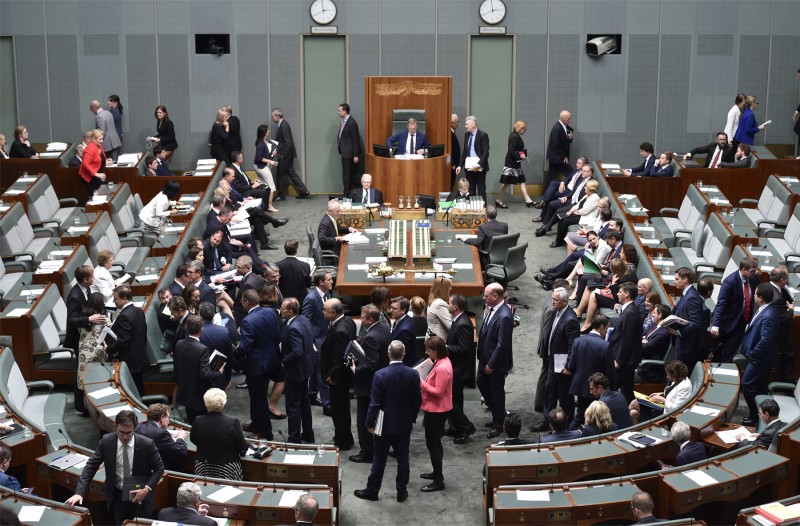Are there any rules, legislation or convention defining how a member of the House of Representatives should vote? What is the duty of a member of the House of Representatives in regard to deciding how to vote?
The Australian Constitution gives the House of Representatives the power to make and change its own operating rules, called Standing Orders. These rules outline how the work of the House is managed each day. For example, the standing orders detail the steps a bill – a proposed law – needs to go through before it is passed by the House.
The Constitution and the Standing Orders do not specify how members of the House or Representatives should vote; rather, it is up to each member to decide how they will vote.
Parliamentary parties usually vote together as a team. During a division – a counted vote – members of parliament sit on the right of the Speaker of the House of Representatives to vote yes and to the left to vote no. If a member of a team decides to vote differently to rest of their team, they walk across the floor to sit opposite the other members of their team. This is called crossing the floor and rarely happens. In a conscience vote – called a free vote in Parliament – members of parliament can vote according to their own beliefs. Each parliamentary party decides if its members are allowed a free vote on a particular issue.
The House of Representatives during a division

DPS AUSPIC
Description
A formal vote called a division happening in the House of Representatives. Members are dividing into two groups. Those voting 'aye' or 'yes' are moving to sit on one side of the House and on those voting 'no' are moving to sit on the other side.
Permission should be sought from DPS AUSPIC for third-party or commercial uses of this image. To contact DPS AUSPIC email: auspic@aph.gov.au or phone: 02 6277 3342.